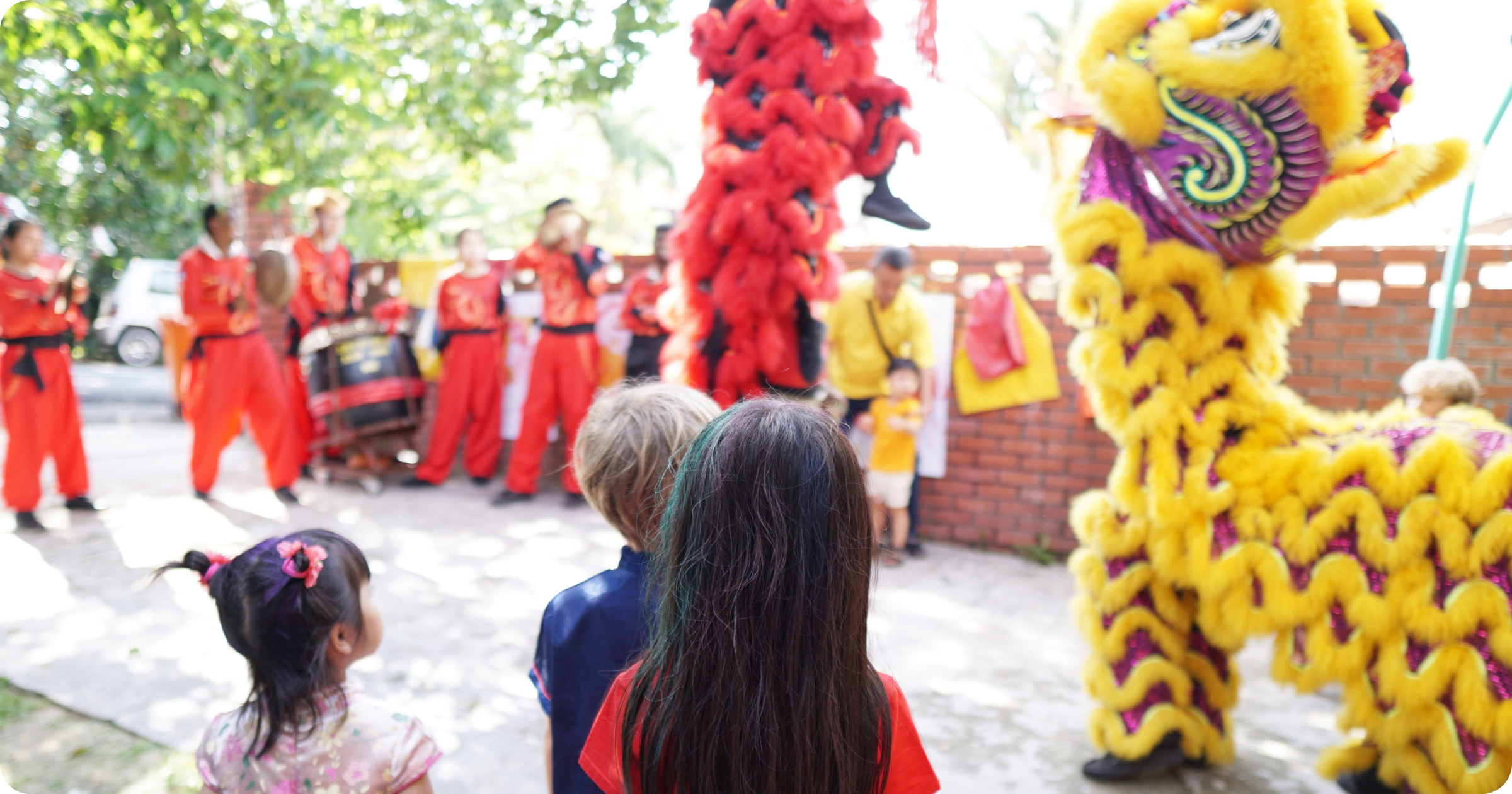
Every year, sometime between late January and early February, about a quarter of the world’s population celebrates the Lunar New Year. This centuries-old celebration is an important holiday in many Asian cultures, and is centered around family, renewal, and prosperity.
In this blog post, we’ll explore various Lunar New Year traditions across Asia, offering a glimpse into their diversity. If you’re looking to expand how you teach about Lunar New Year to your students, this will be a good starting point for your research.
What countries celebrate Lunar New Year?
Before we explore Lunar New Year traditions from around the world, let’s take a look at which countries typically celebrate it. Contrary to what many people might think, Lunar New Year is not just a Chinese holiday. While it does follow the Chinese lunar calendar, the holiday is actually celebrated in many countries across East and Southeast Asia, including North and South Korea, Taiwan, Tibet, Malaysia, the Philippines, Indonesia, Singapore, Brunei, Mongolia, Vietnam, and of course, China.
What are Lunar New Year traditions around the world?
Many Asian countries observe the Lunar New Year in their own special ways, with their own customs, traditions, and names for it. While the traditions vary between regions and communities, the common theme is the celebration of the new (lunar) year with family and food. Most of these celebrations fall on or around the same date in the lunar calendar. (In 2024, celebrations generally start on February 10.)
Here’s a quick rundown of a few of the many countries that celebrate the holiday, along with some of their important Lunar New Year traditions.
Lunar New Year in China
The Chinese New Year, also known as the Spring Festival or Chūnjié, is a 15-day holiday during which families come together to celebrate the transition of the old year into the new one. Each year, millions of people, including those who moved overseas, return to their hometowns to celebrate with their families.
In celebration, there are many customs designed to usher in good luck and prosperity for the upcoming year. For instance, children are given money in bright red envelopes — red is the color of good fortune — called hóngbāo. Ahead of the new year, many people also clean their houses and pay off their debts (if possible).
One of the most important features of a Chinese New Year celebration is the feast on the eve of the new year, where foods with lucky connotations are eaten, including noodles, dumplings, and fish (the Chinese word for “fish” also sounds like the word for “abundance”).
Lunar New Year in Vietnam
In Vietnam, the Lunar New Year, called Tết, is the most important holiday in the country. Tết celebrations can be divided into three periods: Tất Niên (before New Year’s Eve), Giao Thừa (New Year’s Eve) and Tân Nien (the New Year Days).
Just like other countries,Tết is spent with family, and elders will give gifts of money (tiền mừng tuổi) placed inside red envelopes. During the holiday, many families go to the temple together to pray for good luck, health, and prosperity, and will prepare traditional rice cake dishes together, like bánh chưng.
Lunar New Year in South Korea
During the Korean Lunar New Year, called Seollal, celebrants will travel back to their hometowns to visit family and pay respect to their ancestors and elders. It’s a three day celebration that spans the day of, and the day after the Lunar New Year.
Some Koreans will wear traditional costumes called hanbok. There are also traditional games that people play during the holiday, such as yutnori, a board game with wooden sticks. As part of the celebration, children will demonstrate a show of respect to their elders with formal bows called seh bae, where they’ll kneel deeply with their hands on the ground to wish their elders a happy new year. In return, elders will give children money (seh bae don) and share words of wisdom for the upcoming new year. Special foods like
mandu (Korean dumplings) and dduk-guk (rice cake soup) are prepared for the occasion.
Lunar New Year in Singapore
In Singapore, the Lunar New Year is celebrated primarily by members of the Chinese diaspora, who make up about 75 percent of the country’s population. Naturally, there are many traditions that have been brought over from China, like the giving of red envelopes, and family meals. It’s also customary to pay respect to ancestors by going to a temple and lighting incense.
During the Lunar New Year, there are two big public celebrations in Singapore that take place every year — the Chingay Parade and River HongBao — both of which are highly anticipated events.
Lunar New Year in Mongolia
Tsagaan Sar, the Lunar New Year in Mongolia, falls on the first new moon after the winter solstice. Families come together to celebrate the “White Moon Festival” with joyous festivities and customs. Many traditional foods for the holiday include dairy — like tsagaalga, a mixture of rice, raisins, and curd — because of the symbolism of its white color as a way to purify what’s dark. People greet each other with holiday-specific greetings such as amar baina uu, meaning “Are you living peacefully?”
By celebrating Lunar New Year in your class, you can introduce students to some of the customs and traditions that their classmates might hold dear. Plus, you can easily tie it into some of the units you typically cover throughout the school year. For example, elementary teachers can tie the holiday into their geography lessons, while middle and high school teachers can integrate it into their units on world history, immigration, or culture.
If you want to read more about the traditions we’ve covered (and others!), check out these posts from the Asia Society:
And for more ways to incorporate Asian history into your lesson plans throughout the school year, you can read:






